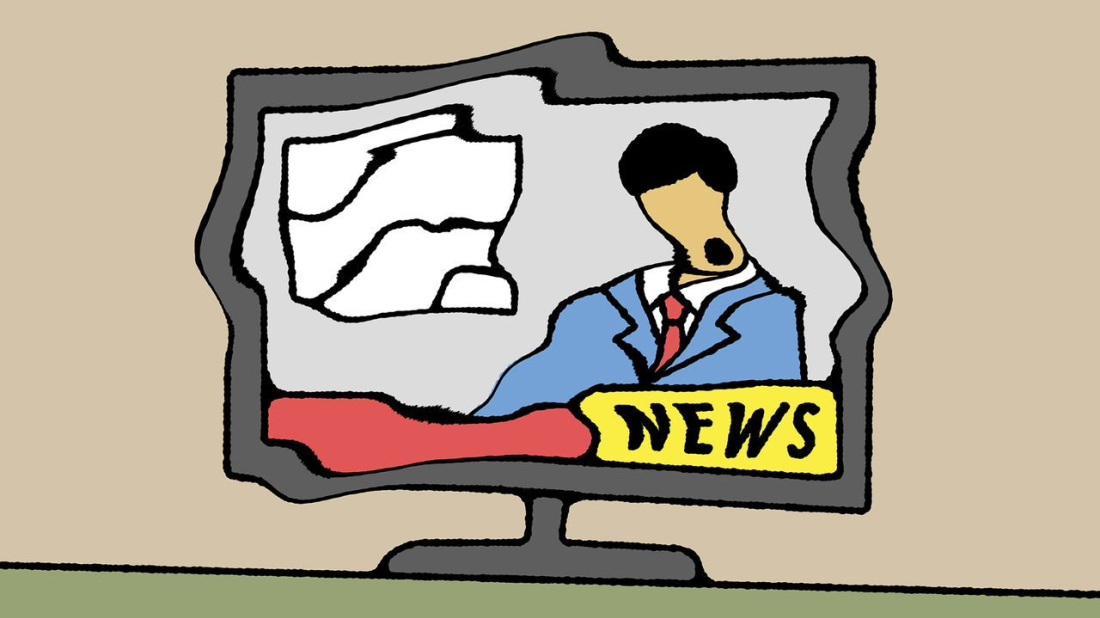German chancellor Merz congratulates Azerbaijan and Armenia leaders
German Chancellor Merz addresses foreign companies and congratulates Azerbaijan and Armenia on peace deal...

In the aftermath of India’s May 7 retaliatory strikes on Pakistan, Indian television news descended into an unprecedented frenzy, broadcasting fabricated reports and inflammatory rhetoric that not only contradicted official government messaging but also damaged the country’s international standing and domestic credibility.
While India’s military operation was characterized by government officials as “non-escalatory,” intended as a proportionate response to a terrorist attack on tourists in Kashmir, Indian broadcast news delivered a wildly different narrative. Anchors claimed India had launched full-scale assaults on Karachi’s port, that its army had crossed international borders, that Pakistan’s leadership had fled, and even that a coup had taken place in Islamabad. None of these reports were true.
Yet these fabrications aired with dramatic backdrops of animated fighter jets and sirens. One anchor even called for the destruction of Karachi, while a guest hurled slurs at Iran’s foreign minister, sparking a diplomatic incident. The gap between government communications—measured, factual, and diplomatically cautious—and TV coverage—emotive, nationalistic, and misleading—could not have been wider.
The government, especially Prime Minister Narendra Modi’s Bharatiya Janata Party (BJP), has long benefited from a supportive media ecosystem. However, this time, the very fervor that has helped project strength backfired. As Manisha Pande, a prominent media critic, noted, “If you’re claiming to be a nationalist news channel at least serve the national interest.”
Instead, the media’s unrestrained jingoism undermined both national security and public understanding. Border communities were left confused by exaggerated reports of drone swarms and mass suicide attacks. With newspapers lagging behind due to the nocturnal timing of the skirmishes, only a handful of fact-checkers and individual citizens helped debunk the torrent of disinformation in real time.
The final blow came with U.S. President Donald Trump’s unexpected May 10 ceasefire announcement, bringing hostilities to a halt just as Indian media had convinced viewers that total military victory was imminent. The sudden diplomatic resolution triggered disillusionment among the public, which had been led to expect nothing short of Pakistan’s defeat.
The backlash was immediate. Nationalists turned on the government, accusing it of capitulation. Foreign Secretary Vinay Kwatra and his family faced personal online abuse, and the BJP scrambled to contain the fallout. Modi delivered a national address on May 12, insisting that India would not enter broad talks with Pakistan despite U.S. claims to the contrary. Simultaneously, the BJP announced victory rallies across the country, attempting to recapture a sense of momentum.
Yet few were convinced. The government’s credibility suffered not because of battlefield outcomes, but due to the narrative it allowed to flourish on television. Indian TV news, by inflating expectations and distorting facts, transformed a moment of calculated deterrence into one of national confusion and frustration. The media’s descent into unfiltered nationalism may have entertained audiences, but it left the ruling party grappling with the consequences of its own echo chamber.
Authorities in Japan lifted all tsunami warnings on Tuesday following a strong 7.5-magnitude earthquake that struck off the northeastern coast late on Monday, injuring at least 30 people and forcing around 90,000 residents to evacuate their homes.
Pressure is mounting between Venezuela and the United States as both nations emphasise military preparedness and strategic positioning.
Tehran has protested to Washington because of the travel ban on its football team delegation as well as Iranian fans who would like to travel to the United States for the upcoming World Cup matches in 2026.
Paramount Skydance (PSKY.O) has launched a $108.4 billion hostile takeover bid for Warner Bros Discovery (WBD.O). The escalation follows a high-stakes battle that had appeared to end last week when Netflix secured a $72 billion deal for the studio giant’s assets.
Russia has welcomed U.S. President Donald Trump’s new National Security Strategy, calling it largely consistent with Moscow’s own vision, as Washington pushes forward with efforts to broker an end to the war in Ukraine.
A group of demonstrators gathered outside the Norwegian Nobel Institute to protest the awarding of this year’s Nobel Peace Prize.
German Chancellor Merz addresses foreign companies and congratulates Azerbaijan and Armenia on peace deal
U.S. Treasury Secretary Scott Bessent confirmed on Tuesday that he had discussed U.S. sanctions on Russian oil giants Lukoil and Rosneft with Ukrainian Prime Minister Yulia Svyrydenko.
Ukrainian President Volodymyr Zelenskyy has said that his country and European partners will soon be ready to present the United States with refined documents outlining a potential peace plan.
The United States Senate is set to vote on Thursday on a Republican-backed plan aimed at addressing expiring Affordable Care Act (ACA) subsidies, Senate Majority Leader John Thune announced on Tuesday.
You can download the AnewZ application from Play Store and the App Store.

What is your opinion on this topic?
Leave the first comment